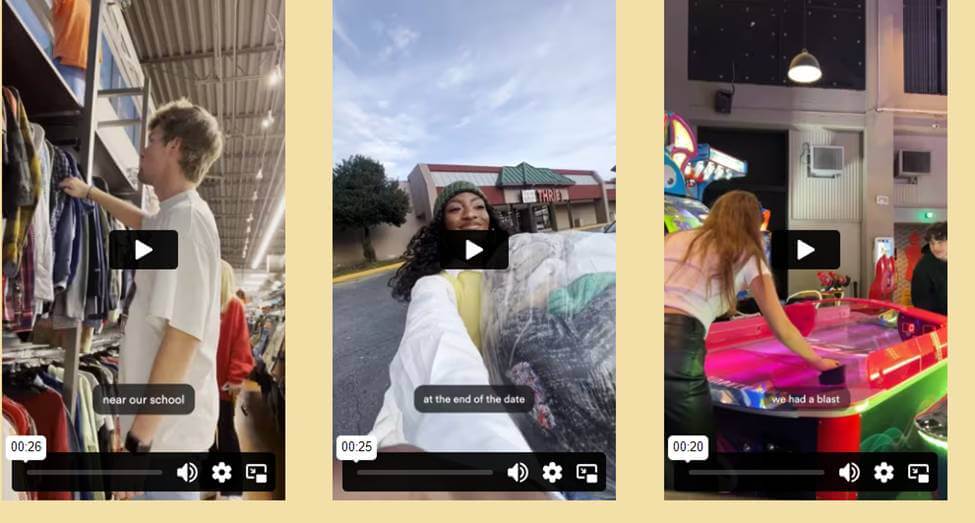If you want to skyrocket your customer acquisition efforts, you must target customers on the best customer acquisition channels.
But how do you evaluate which channel you should use?
You’re on the right page for that. You’ll find out:
- The 7-step plan to finding the best acquisition channels
- Actionable advice and tools you can implement today
- Insider stories from our customer acquisition agency
Let’s dive right in.
1. Understand Your Customers to Find the Best Channel
Tl;dr:
- Use demographic and behavioral data to create detailed buyer personas.
- Delve into specific characteristics of your potential customers, including unusual behaviors or niche interests.
- Explore segments that competitors might have overlooked.
The best acquisition channels for your business are the ones your potential customers use. So, the key first step is understanding your target audience.
1.1. Gathering Data
- Leverage your existing customer database: Analyze purchase history, engagement patterns, and any demographic information you have. Use CRM software to streamline this process.
- Use surveys and interviews: Ask your existing or potential customers about their preferences, needs, and challenges.
- Use social media and website analytics: Use analytics tools to understand who engages with your content, their interests, and behaviors.
- Research market reports: Access market reports and industry studies highlighting broader market trends and demographic information about your customer base.
- Monitor online forums and communities: Pay attention to discussions in online forums and communities related to your industry. That’s how you can sleuth out niche interests and behaviors of your potential customers.
Insider Story: Bumble (Part 1)
At inBeat, we value data-driven, results-oriented strategies.
When the Bumble app needed to launch a paid ads campaign to increase app downloads and in-app users, we started with their potential customers.
We looked at Bumble’s previous campaigns, databases, and social media analytics to understand who uses this dating app.
1.2. Building Buyer Personas
- Segment your audience: Divide your potential buyers into segments based on common characteristics, such as age, location, income level, job title, etc.
- Identify behavioral patterns: Look for patterns in purchasing behavior, online activity, and engagement with your marketing content.
- Create detailed profiles: For each segment, create a complex persona. Include customer demographics (age, gender, income, etc.), behavioral traits (buying habits, preferred communication channels), and psychographic elements (values, interests, lifestyle).
- Include unique characteristics: Look for niche behaviors and interests that distinguish a segment. These details give you competitive advantages in targeting.
- Validate and update regularly: Use real data from current customers and feedback to validate your personas and ensure they’re accurate. Update them regularly to reflect changes in customer behavior and market trends.
Insider Story: Bumble (Part 2)
We found that most of Bumble’s users are young Gen Z-ers looking to make real connections with the people they date.
We also discovered these people are adventurous and energetic. Their favorite channels included social media, especially TikTok.
1.3. Explore Segments Your Competitors Missed
To explore segments your competitors might have missed, look at their audience segments and identify gaps.
You can use:
- Market reports to discover industry trends
- Social media listening tools to identify users’ complaints or pain points
- Government data discussing population changes, economic shifts, and other factors
You should also:
Identify new trends that your competitors haven’t capitalized on yet, such as:
- Shifts in consumer behavior
- New technology adoption
- Evolving cultural norms
Insider Story: Bumble (Part 3)
We researched Bumble’s competitors and their behavior on social media.
Our expert team discovered that these companies were missing a key niche.
An important audience segment comprises people going on their first dates.
That’s how we got to the first-date idea for the UGC campaign we built for Bumble:

2. Analyze Competitors
Key points:
- Study competitors’ strategies, marketing tactics, and prospective customers to identify gaps and opportunities.
- Learn from competitors while developing unique value propositions that set your business apart.
A thorough competitor analysis helps you identify opportunities you can leverage, such as niches and messages your competitors aren’t targeting.
You can also zero in on high-performing strategies they’re using that you can reverse-engineer
Here’s how to perform this competitor analysis to identify the best channels for customer acquisition:
- Identify your main competitors: List your direct competitors, meaning businesses with similar products and services with the same target audience. Then, list your indirect competitors – companies that compete for the same customer base with distinct products.
- Analyze your competitors’ online presence:
- Website analysis: Examine their website structure, content, and user experience.
- SEO strategies: Use tools like Ahrefs or SEMrush to understand their search engine optimization tactics.
- Social media analysis: Look at their social media channels to see engagement levels, content strategy, and audience interaction.
- Email marketing: Subscribe to their newsletters to understand their email marketing strategy.
- Evaluate their sales channels:
- Direct and indirect channels: Look at how they sell their product: directly, through partners, online, or offline channels.
- Customer journey: Understand their customers’ steps from discovery to purchase.
- Look for gaps and opportunities:
- Identify any potential market segments they might be overlooking.
- Determine if there are any channels (like certain social media platforms or online events) they’re not leveraging effectively.
- Adapt strategies that work well for them to increase your conversion rate.
- Look for areas where they are lacking and consider how your business can fill those gaps.
- Develop Your Unique Value Proposition (UVP):
- Based on the analysis above, identify how your product or service can stand out. This could be through unique features, pricing, customer service, or innovation.
- Craft your marketing messages to highlight this UVP.
Insider Story: Aura Parental Control
In the case of Aura Parental Control, we saw that our competitors weren’t making the most of social media to target young parents with toddlers.
And most of Aura’s audience uses social channels to learn about their products. They are also preoccupied with their kids’ safety while using smartphones.
That was the free niche we could use to build Aura’s unique value proposition:
Here are some tools you can use:
- SEMrush: This tool analyzes your competitors’ keyword and online marketing strategies. Use it to identify gaps in their targeting and opportunities you can leverage.
- BuzzSumo: Specialized in content analysis, BuzzSumo reveals trends in content performance, so you’ll know what content works well in your industry and what isn’t covered. That’s how you can find segments interested in less-explored topics or niches.
- Google Trends: This free tool allows you to see the popularity of search terms over time. Basically, you’ll compare industry trends with those that your competitors capitalize on. Use the opportunities that fit your niche/ company.
- Social Mention: This tool monitors social media channels to track discussions around certain topics. Use it to identify emerging trends, sentiments, and conversations your competitors might not address.
3. Keep Up with Trends
Key points:
- Stay abreast of emerging trends in your industry that can reveal new acquisition opportunities.
- Regularly reassess and update acquisition strategies to align with current market realities.
- Adapt strategies in response to global economic, social, or technological changes.
Life changes, and so do trends.
3.1. Follow Emerging Trends
Remember: Emerging trends translate into new acquisition opportunities and more effective customer acquisition channels.
For example, we all noticed an increased use of AI and machine learning.
Integrating AI into marketing tools leads to more personalized and targeted marketing efforts.
New acquisition opportunities include:
- AI-driven platforms for precise targeting on social media and search engines
- AI-powered chatbots and AI agents for interactive customer engagement on websites and messaging apps may be better than cold calling and streamline your sales process.
3.2. Reassess and Update Acquisition Strategies
When noticing new trends, you must reassess and adapt your acquisition strategies to content consumption shifts.
For example, AI is making generic content almost obsolete.
Google has revised its guidelines to focus on personal experience and expert advice. People are also craving personalized content rather than generic blog posts.
That means you can:
- Use data analytics to understand customer preferences to create valuable content.
- Shift to more customized customer acquisition techniques, such as influencer or video marketing.
3.3. Adapt Customer Acquisition Strategies to Global Changes
- Monitor economic trends: Look for consumer spending habits and economic shifts. Focus on cost-effective digital channels like social media and email marketing during economic downturns.
- Stay attuned to social movements: Track shifts in consumer values and use channels aligning with these social changes. For example, when customer trust in paid advertising decreases, leverage SEO.
- Follow new technologies that can impact your customer journey: For example, augmented or virtual reality can be game changers. So, consider online channels that can offer virtual experiences or AR-based product previews.
4. Budget and Resource Allocation
Key points:
- Understand financial limits and allocate resources effectively for maximum ROI.
- Prioritize channels that offer the best ROI within your budget constraints.
Every company aims to understand its financial limits and allocate resources effectively for a maximum ROI.
Basically, your goal is to prioritize acquisition channels that offer the best ROI within your budget constraints.
Here’s how to optimize your budget when choosing customer acquisition channels:
- Assess your overall marketing budget, analyzing direct and indirect costs associated with customer acquisition.
- Look at past marketing expenditures and the ROI they generated to identify what worked and what didn’t.
- Divide your budget into categories like paid advertising, content creation, SEO, and social media marketing.
- Assign a larger portion of the budget to channels that have historically shown higher ROI.
- Embrace cost-effective strategies like SEO, content marketing, and social media. These channels increase organic searches, engagement, and traffic.
- Allocate a small portion of the budget to test new channels or strategies. If a new channel proves effective, gradually increase its budget allocation.
- Prioritize the acquisition channels for optimal ROI, evaluating each channel’s performance.
- Assess metrics like click-through rates, conversion rates, and customer acquisition costs per channel.
- Consider customer lifetime value (CLV), meaning the long-term value of customers acquired through each channel.
- Use data-driven decision-making to optimize your budget. First, use analytics tools to monitor each channel’s performance. Then, shift your resources to channels that consistently show the best ROI.
Pro tip: Remember to reassess your budget allocation periodically and change gears according to new trends or economic shifts.
Insider Story: Prose
Prose is one of the direct-to-consumer brands we worked with.
They create UGC regularly, maximizing their budget by leveraging word-of-mouth marketing.
And they’re reaching a wider audience than their competitors.
We helped them with 50 unique and reusable content assets per month using a scalable micro-influencer recruitment process.

But to get to this point, we had to analyze different acquisition channels and optimize the messages for each.
5. Brand Consistency and Messaging
Key points:
- Ensure that chosen channels resonate with your brand’s style and values.
- Customize communication to align with the needs and preferences of your target audience.
You must maintain brand consistency across various customer acquisition channels.
That consistency is the backbone of building trust and recognition with your target audience.
Here are actionable steps to pick customer acquisition channels that fit your brand:
- Define your brand identity, outlining your values, mission, and vision.
- Develop a brand style guide that includes logo usage, color palette, typography, and tone of voice.
- Select channels that align with your brand identity. For instance, a professional B2B brand might prioritize LinkedIn, while a youth-oriented brand might focus on Instagram or TikTok.
- Keep your brand’s look and feel consistent, including the design of your digital business card, across all platforms and throughout the entire buyer journey.
- Ensure all team members who create content or interact with customers are well-versed in your brand messaging and style guide.
- Adapt your core message to fit the format and audience of each channel. For example, content on LinkedIn might be more formal and business-oriented, while Instagram content might be more visual and casual. Also, leverage data analytics to personalize marketing messages, emails, and website experiences for different audience segments.
- Use the most effective interaction style for each platform, like engaging directly with followers in social media comments or using storytelling in blog posts.
- Review how your audience reacts to your content across different channels and use their feedback to refine your messages.
6. Data and Analytics
Key points:
- Use data to understand customer behaviors and measure the effectiveness of different channels.
- Track performance data to refine and improve acquisition strategies.
Customer acquisition strategies are based on real numbers, so you must learn to acquire and interpret data correctly.
You’ll need metrics on two main points:
- Customer behavior
- Channel performance
6.1. Understand Customer Behavior
- Gather data from multiple sources: This includes website analytics, social media insights, customer surveys, sales data, and any other relevant customer interaction data. Implement tools like Google Analytics, social media analytics, and CRM software to collect and analyze this data systematically.
- Analyze customer lifecycles: Map customer touchpoints to identify all the points where customers interact with your brand, from initial awareness to purchase. Use analytics to understand how customers behave at each touchpoint – what attracts them, what engages them, and what leads to conversions.
6.2. Understand Channel Performance
- Track key performance indicators (KPIs): Choose metrics that reflect your goals, such as click-through rates, conversion rates, customer acquisition cost, and return on investment (ROI). Track these KPIs across different channels to evaluate their performance.
- Conduct A/B testing: Test different elements within a channel (like ad copy, landing pages, or email content) to see what works best. Then, explore new channels to find what works best. Use the results to optimize your marketing materials and strategies.
- Analyze ROI across channels: Evaluate the ROI of each channel to understand where you’re getting the most value. Allocate more resources to channels that yield the highest ROI. Be ready to pivot strategies based on market trends, customer feedback, and performance metrics.
Insider Story: Bluehouse Salmon
The data above will help you adapt your customer acquisition channels and strategies.
For example, one of our clients, Bluehouse Salmon, wanted to explode its online presence using social media marketing.
The problem: Their company retails organic salmon, which is less appealing than a beauty brand or a value-oriented company.
Let’s face it: organic salmon isn’t inspiring.
The solution: We started powering their social media calendar with user-generated content. This type of content creates social proof and desire.
Results: Their organic visibility skyrocketed on Instagram. Bluehouse Salmon now has a wide range of reusable content assets and mostly uses UGC-based social media posts. Plus, UGC is a cost-effective acquisition strategy compared to paid ads.

Get the most out of your paid media with inBeat TikTok Ads Agency
7. Focus on Sustainable Growth
Key points:
- Choose channels that don’t just provide immediate gains but also contribute to sustainable growth.
- Continually assess and adjust strategies to align with evolving business and market dynamics.
Paid ads or affiliate programs can boost your sales in the short term. However, you must look beyond immediate returns if you aim for organic growth:
- Assess channels: Don’t just look at their short-term effectiveness but also at their potential for long-term growth and customer retention. For example, content marketing might not yield immediate results. However, it can establish your brand as a thought leader, leading to sustained business growth.
- Assess scalability: Determine if the channel can scale with your business without exponential cost increases. For example, paid advertising on social media can be scaled up or down based on budget and target audience size.
- Using data points: Track sustainable metrics, like Customer Lifetime Value (CLV). Focus on channels that attract satisfied customers with a higher CLV, as they contribute more to steady growth. Also, analyze customer retention rates to track how well different channels retain customers over time. For example, networking events have a low cost per acquisition and high retention rates thanks to the face-to-face interactions.
- Monitor brand engagement metrics: Evaluate the quality of comments and brand mentions each channel generates. Higher engagement typically correlates with stronger brand loyalty and advocacy, so prioritize these channels.
Remember to develop strategies that balance acquiring new customers with retaining existing ones.
For example, implement loyalty programs and community-building initiatives, particularly in channels where your audience is most active.
Wrapping Up
The seven steps above will help you pick the best acquisition channels for your needs.
Remember to follow the data, but be flexible and adapt.
Allocate a portion of your budget to test new channels for customer acquisition. And always stay atop of emerging trends, both locally and globally.
Returning to the data has always worked for inBeat – and it will work for you.
If you need help getting started, let’s schedule a free strategy call. We’ll discuss your business goals and help you pick the best channels to skyrocket your customer acquisition efforts.
Want more examples of successful influencer marketing strategies? Check out our case studies.

